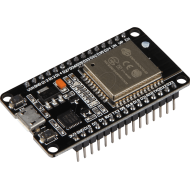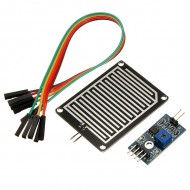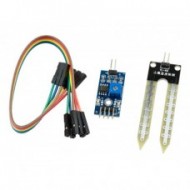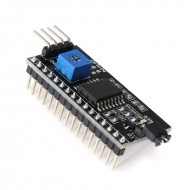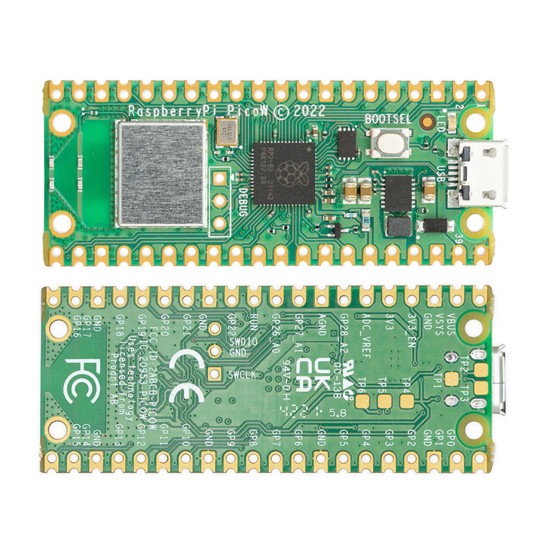
The Raspberry Pi Pico W offers a minimal yet flexible design for supporting the RP2040 microcontroller chip. It features external components such as a Winbond W25Q16JV flash memory, a crystal, power supplies and decoupling, and a USB connector. The majority of the RP2040's pins are accessible via user I/O pins on the left and right edges of the board. Four of the RP2040's I/O pins are used for internal functions such as driving an LED, controlling the on-board switch mode power supply, and sensing system voltages.
In addition, the Pico W features an on-board 2.4GHz wireless interface using an Infineon CYW43439, and an onboard antenna licensed from ABRACON (formerly ProAnt). The wireless interface is connected to the RP2040 through SPI. The board is designed to accommodate either soldered 0.1-inch pin-headers or to be used as a surface-mountable module, as the user I/O pins are also castellated. There are also SMT pads located under the USB connector and BOOTSEL button, which allow these signals to be accessed if used as a reflow-soldered SMT module.
The Raspberry Pi Pico W features an on-board buck-boost switch mode power supply (SMPS) which can generate the required 3.3V to power the RP2040 microcontroller and external circuitry from a wide range of input voltages, roughly between 1.8V to 5.5V. This provides a significant degree of flexibility in powering the board from various sources, such as a single lithium-ion cell or three AA cells in series. It also makes it easy to integrate battery chargers into the power chain.
The Pico W's flash memory can be reprogrammed using USB, by simply dragging and dropping a file onto the board which appears as a mass storage device. Alternatively, the standard serial wire debug (SWD) port can be used to reset the system and load and run code without any button presses. The SWD port can also be utilized for interactive debugging of code running on the RP2040.
Features
RP2040 microcontroller with 2MB of flash memory
On-board single-band 2.4GHz wireless interfaces (802.11n)
Micro USB B port for power and data (and for reprogramming the flash)
40-pin 21mm×51mm 'DIP' style 1mm thick PCB with 0.1" through-hole pins also with edge castellations
Exposes 26 multi-function 3.3V general purpose I/O (GPIO)
23 GPIO are digital-only, with three also being ADC capable
Can be surface-mounted as a module
3-pin Arm serial wire debug (SWD) port
Simple yet highly flexible power supply architecture
Various options for easily powering the unit from micro USB, external supplies or batteries
High quality, low cost, high availability
Comprehensive SDK, software examples and documentation
- Stock: 1
- Model: PICOW
- Weight: 0.04kg

